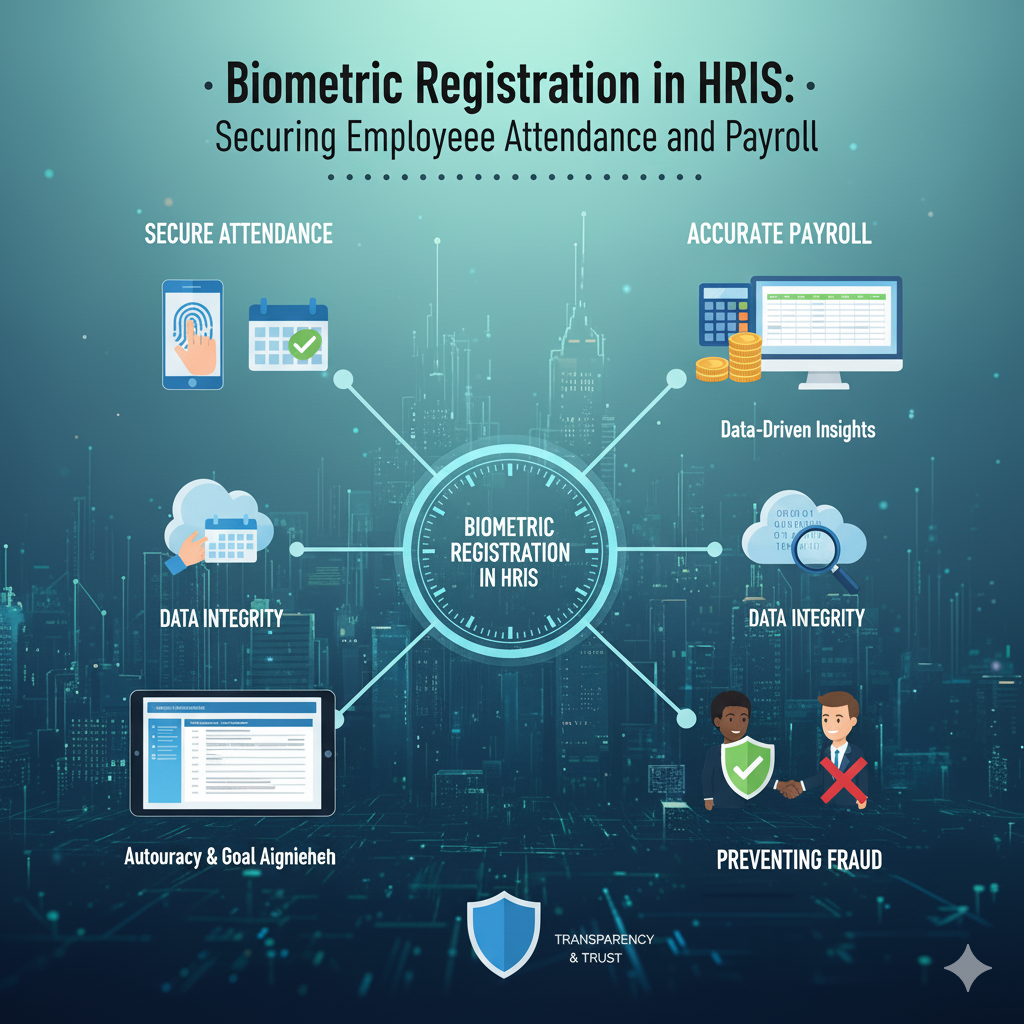Address
Kaypian, San Jose Del Monte City, Bulacan Philippines
Work Hours
Monday to Friday: 8AM - 6PM
Weekend: 10AM - 5PM
Address
Kaypian, San Jose Del Monte City, Bulacan Philippines
Work Hours
Monday to Friday: 8AM - 6PM
Weekend: 10AM - 5PM


Integrated HR. Accurate Payroll.


Integrated HR. Accurate Payroll.

In an era where accuracy, transparency, and security are critical for workforce management, businesses are increasingly relying on biometric technology within Human Resource Information Systems (HRIS). From fingerprint scanning to facial recognition, biometric registration has become a powerful tool for ensuring that employee attendance and payroll systems are both reliable and secure.
This blog explores the role of biometric registration in HRIS, its benefits, and how it empowers organizations to streamline HR operations while building trust among employees.
Biometric registration is the process of enrolling employees’ unique biological identifiers — such as fingerprints, facial features, or iris scans — into the HRIS database. Once registered, employees can use biometric devices to clock in and clock out, ensuring precise attendance tracking and eliminating fraudulent entries.
This integration directly supports:
Traditional attendance methods like ID cards or manual logbooks are prone to errors and manipulation. With biometric registration, HRIS systems can:
Payroll errors are one of the most common causes of employee dissatisfaction. By integrating biometrics with HRIS, companies can:
This ensures that employees are compensated fairly and on time.
Biometric data is unique to each individual, making it a secure way to authenticate employee identity. Within HRIS, this contributes to:
When employees know their attendance is recorded through secure biometric systems, they gain confidence in payroll accuracy and HR fairness. This fosters:
✅ Accurate attendance tracking
✅ Error-free payroll processing
✅ Prevention of time theft and fraud
✅ Simplified HR operations
✅ Data security and compliance assurance
To maximize the effectiveness of biometrics in HRIS, organizations should:
Biometric registration in HRIS is more than just a technological upgrade — it’s a strategic move that ensures secure attendance tracking, accurate payroll, and workforce transparency. By adopting biometric systems, organizations can eliminate inefficiencies, strengthen compliance, and build a culture of trust.
As workplaces evolve, biometric registration will continue to play a crucial role in shaping the future of HR technology.